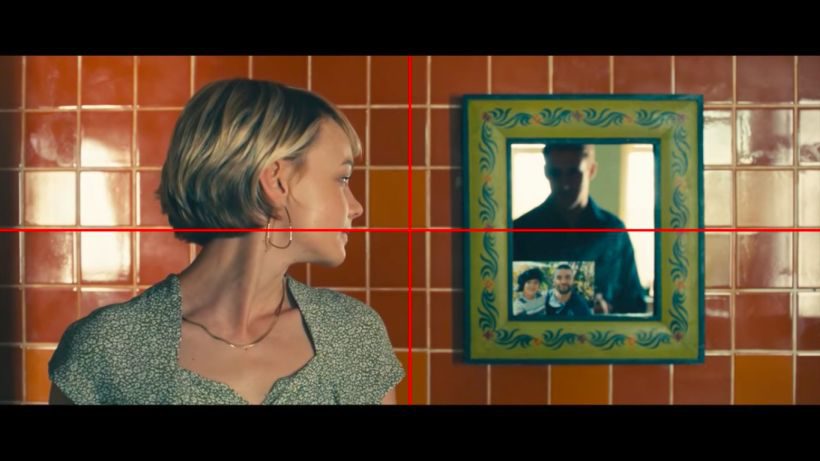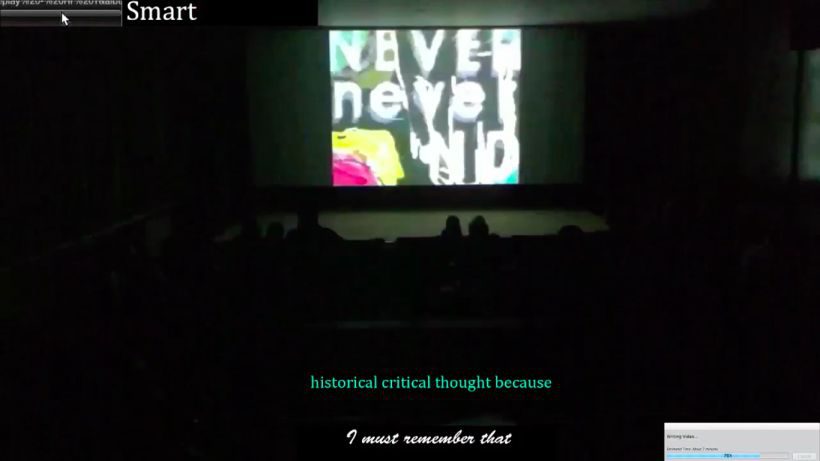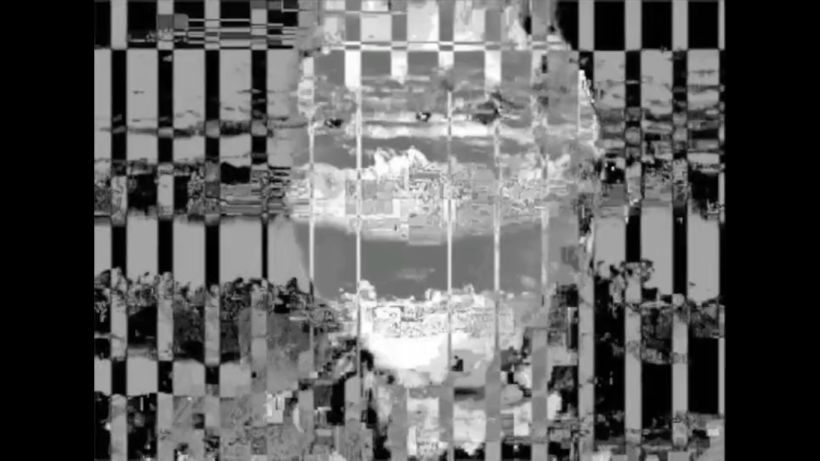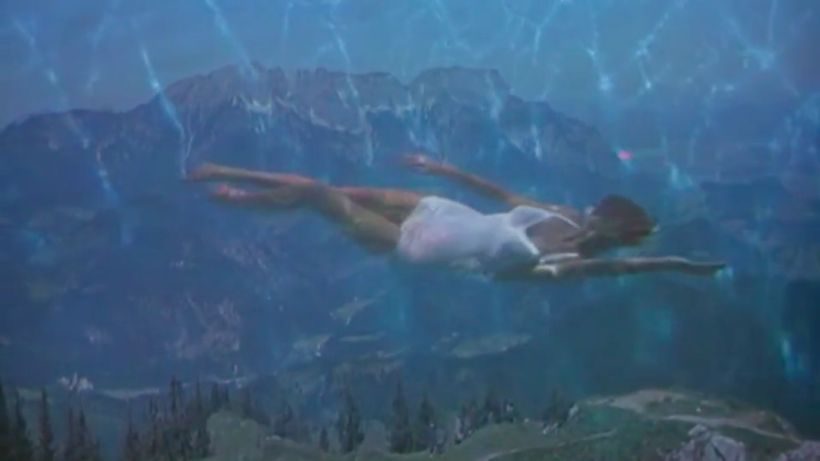
„Drive (2011) – The Quadrant System” (Tony Zhou)
“Every Frame a Painting” is the name of Canadian filmmaker and editor Tony Zhou’s YouTube channel, which has been online since 2014 and engages with the phenomenon of cinema. Zhou uses his short videos consisting of newly edited original movie scenes to analyse how films and their encompassing production routines operate, for instance most recently in a video about composition strategies in the Marvel movies. Over the years, his channel has been accessed about 50 million times. His work has also long been viewed and acknowledged in Germany, generating articles in the Zeit and Süddeutsche newspapers. After being active for a year, Zhou released a video that explores the argumentation strategies and structuring decisions in Orson Welles’ “F For Fake” – his most important source of inspiration up to then. In the clip entitled “How to Structure a Video Essay”, Zhou describes how he approaches cinema in his own videos and what a “video essay” actually is:
“Remember, video essays aren’t essays. They’re films. So you wanna structure and pace them like a filmmaker would.”
Kevin B. Lee began at an even earlier stage to utilise the Internet to grapple with cinema on an audio-visual level, likewise using the term video essay. Shortly after YouTube first went online in 2005 and the “fair use” doctrine in US copyright law was extended to audio and video material, Lee began his “Shooting Down Pictures” blog project in 2007. For three years, he released commented movie excerpts and soon developed more complex videos with critical high-quality film reviews in an exchange process with New York-based critics such as Jonathan Rosenbaum, Chris Fujiwara, Mike D’Angelo or Richard Brody. He has released more than 350 online articles to date, among others from 2011 in Keyframe, the US streaming service Fandor’s online magazine as well as in the US online magazine IndieWire’s blog “Press Play”. Lee is regarded as one of the most renowned advocates of the video essay, who has already released numerous distinct and media-savvy statements on the workings and referential aspects of this format. Yet for that: The operator of Keyframe just recently removed all of his videos from the Internet and Lee turned his back on them in protest (for more details see here. The reason for all this was a copyright dispute. A setback that demonstrates: The discussion on the emergence and legitimation of the video essay format is far from over, if only from a legal viewpoint alone.
Zhou and Lee, together with Adrian Martin, Cristina Álvarez López, Catherine Grant, Matt Zoller Seitz, Dana Linssen, Michael Witt or Matthias Stork, belong to the English speaking players associated with the video essay concept at an international level today, using it as a means to characterise, claim and adjudicate a contemporary practice of confronting and analysing cinema. They have all long become well known beyond their own cultural environment, advocating the recognition and acknowledgement of a sustained and democratising audio-visual engagement with cinema in the international world of academia, within the critical movie review practice and in the context of festival and film series. A democratisation which is reasoned by the new accessibility to visual material in the digital era with constantly expanding distribution options for video and the increasingly simplified handling of video footage, as indeed beyond doubt also in new sensitivities and adaption practices for the moving image. Because of the new questions and issues which arise in light of the current medial practices, Kevin B. Lee, as the first scholarship recipient of the newly founded Harun Farocki Institute, was recently invited to Berlin to give an outline on his personal position concerning access to cinema and on essayist works with copyright protected material.
Ten years after it first emerged as a concept, the video essay is one that could barely be more diffuse, such that even Kevin B. Lee repeatedly has to embrace it anew on a practical level. And that is because it barely seems clear which formats this genre includes, as well as which publication practices and mind-sets. And the increasing number of overview texts, journals and book contributions quickly reveal: By now the video essay occupies a position between various fields of discussion and film formats, between literary and academic lines of tradition, is constantly defended as a practice, yet questioned as such to an equal extent, and is repeatedly modified and newly adjudicated. The video essay as a concept for discussion stands for, together with numerous related terms, an ongoing debate, acting as a plea for the legally unrestricted usage of audio-visual works in academic and film critique contexts, and that before all the issues have been clarified.

„Found Found Found“ (Dirk de Bruyn)
The Roots and Fuzziness of the Video Essay
In an article that was published after the “Critical Theory, Film and Media: Where is Frankfurt Now?” conference in Frankfurt in 2014, Adrian Martin and Cristina Álvarez López addressed on a film history level the comparative perspectives of the work on video essays today, ranging from Joseph Cornell and ROSE HOBART (1936) to Jean-Luc Godard and HISTOIRE(S) DU CINÉMA (1988-1998). They contextualised the essayist work on film material by Agnès Varda, Chris Marker, Ken Jacobs and Harun Farocki. In their eyes, the “audio-visual essay”, as they prefer to term the video essay, draws its roots from two areas:
“There is the tradition of research and experimentation that comes through avant-garde film and video, particularly all that is gathered under the rubric of found footage work. […] Then there is the essay-film (or film-essay), that historic breakaway from supposedly objective documentary which stresses the elements of the personal and the reflective, and which has itself spawned many sub-forms in the digital age.” http://www.necsus-ejms.org/introduction-audiovisual-essay-child-two-mothers/
This is compounded by the complexity of the essay concept itself, the categorising of video works on the basis of mind-sets, which transform an essay into an essay in a classical sense: As a principal rationale for essayist video works, Martin and Álvarez López underscore the clear connecting line that the classical essay concept draws between an artistic-creative access to material and a fundamentally critical-reflective perspective of the significant authors. Yet for that, in connection with essayist formats, they do issue a warning of codifications that now even entail an historic-conceptual access. To generally define the essayist work for instance as “excursive, reflective and subjective” obstructs the actual potential of the area: The opportunity to surprise, to invent and to step beyond limits.
Regarding her own video essays, the film academic Catherine Grant emphasises exactly this potential for surprise, for instance when she speaks of the poetic and the performative – arguing in a very similar manner as the film critic and curator Dana Linssen, who each year at the Critics’ Choice during the Rotterdam film festival encourages people of the film critic field to comment on the individual film programmes with essayist videos. Kevin B. Lee works in a more defined way, flirting in quizzical essayist terms with codifications in order to politicise them: And he assertively positions himself in his work within the tradition of Adorno, Montaigne and Bacon.
The formal inconsistency in the discourse on the video essay as a format is quite doubtlessly entwined inseparably with traditional inconsistencies, with the changeable nature of the essayistic. Linked to recurring political disputes about a legal basis and the acknowledgement of a current practice with images, it seems of little surprise that, fuelled by the recurring fuzziness of the accompanying discussions and in addition to passionate intercessions, peeved polemics also flare up repeatedly, such as for instance in Patrick Holzapfel’s response to the article in the Süddeutsche newspaper.
Repeatedly however, something that is fuzzy also has potential, acting as a challenge and a source of inspiration, such as for instance in Nicolas Rossi’s currently ongoing dissertation project ESSAI CRITIQUE. Because the need for a confrontation with the current perspectives for film-critical and scientific works is evident, focussed platforms have now also arisen in a scientific context: Catherine Grant has, together with Christine Becker, Drew Morton, Matthias Stork and Benjamin Sampson, initiated the online journal “[in]Transition”, which is completely devoted to the audio-visual discussion and examination of film and which publishes meticulously curated and commented illustrative examples. The websites “Audiovisual Thinking” or “The Audiovisual Essay” for instance work in a similar manner. In Germany, especially Michael Baute’s learning initiative “Kunst der Vermittlung” is worth mentioning in this regard. For further guidance, articles such as from the “European Journal of Media Studies”, which is run by NECSUS, are helpful, as indeed is the online reader by Thomas van den Berg and Miklós Kiss – as an attempt to place trends, key figures and styles in relation to each other: “From Audiovisual Essay to Academic Research Video”.

„THIRD PRISM“ (Josh Fenwick-Wilson)
And then there are the hard-fought zones of the Internet, in which video essays also continue to be released and addressed thematically beyond the academic framework. While IndieWire did shelve its own blog “Press Play” in spring, it continues to provide a thematic outlet for the format with external works that have their own presenters. The European streaming website MUBI sporadically publishes pieces in its “Notebook” magazine format and the “Audiovisualcy” group has archived works on Vimeo for years and now even offers space for secondary publications as a reaction to legal disputes. Then there is also Dana Linssen’s magazine “De Filmkrant”, the “Moving Image Source” web resources from MOMI, or the Spanish film magazine “Transit”.
Moving Forward
While the audio-visual publications on cinema bubble with a volatile quality rationale on YouTube and among fans, and, after years of practice, have gained recognition in principle as audio-visual works in an academic context compared to the contents of equivalent scientific forms of publication, the fundamental question of what future the video essay has beyond such spheres arises on a local and immediate level. Through this, however, the video essay also becomes even more unavoidable for the rights holders and editorial offices: Under which circumstances may, can and must the critical film review act in a contemporary manner and continue to appropriate visual material from films for a vivid confrontation with cinema? Taking the video essay seriously for a cultural discourse on cinema not only provides the opportunity to pose productive questions to those responsible, it actually demands it of them. Because this concerns supremacy over the image, as well as media ethics and the updating of artistic concepts characterised by the essayistic. And it is this sense of engagement that ultimately makes the format so interesting and emphatic.
Of course: Video works cannot and will not replace classic criticism and reviews in the public arena, just as little as essayist writing about film will make it obsolete. However, the citing of filmic images in video works also continues to supply the potential for simultaneity, for the opportunity to indivisibly interlace the discursive and the visual – and not solely to quote and describe, but to open up, arrange and agitate. And more so: Of course continuous challenging is required of the filmic image as a basic grammatical element of current media reality, in an appropriation of film as raw material, with access to film as a familiar platform in a sustained confrontation that involves everyone concerned and which is resolved together by and among them all – on the production level and within the artistic practice and the media. Because in fact the filmic is to be regarded as a collective responsibility, as a medially conveyed reality just as much as a power reality. Anyone who does not risk opening up cinematic images to critical, audio-visual scrutiny out of the fear of being exposed in the net does not believe in the original and actual power of filmic works in cinemas. Whoever denies the filmic image to the essayists has already given up on it.

„IN SEARCH OF THE FEMONOMYTH“ (Isobel Guyver)
Ultimately all of the questions come down to the issue of who is going to take a stand for emphatic formats and continuous discussions: Promoting new forms of access to cinema requires creative alliances, and even production alliances, among those who do not want the dispute on the video essay to run dry – alliances like those that first occurred several years ago between Kevin B. Lee and the New York-based film critics. Unlike the fuzzy discussions about the video essay, this question may be posed quite precisely: Can remaining in an outdated TV clip aesthetic, such as for instance in the commentated excerpts from electronic press kits in the video reviews from the FAZ newspaper, help anyone conceptually to expand the understanding of the discussion and analysis of film on a discursive level? Within the structure of these videos, a hierarchy is conveyed especially with largescale productions, a dependence on the visual material provided, or in a nutshell, a limitation on what is showable and may be exemplified and illustrated. In this way, the critical review can only adjudicate that which is standardised and prefabricated, where it would in fact be able to potentially interact with cinema and, by means of aesthetic strategies, develop new spaces for thought. When hierarchies do exist, such hierarchies risk becoming the sole subject in the relationship between the critic and their practice, blurring any potential for inspiration.
Videoessays
„Chaos Cinema: Part I“ (Matthias Stork)
„Chaos Cinema: Part II“ (Matthias Stork)
„CINEMASTERS: David Cronenberg“ (Alex Kalogeropoulos)
„Drive (2011) – The Quadrant System“ (Tony Zhou)
Found Found Found (Dirk de Bruyn)
„Imitation, Contamination, Dissolution: Bong Joon-Ho’s “Memories of Murder” (Cristina Álvarez López & Adrian Martin)
„IN SEARCH OF THE FEMONOMYTH“ (Isobel Guyver)
„Jackie Chan – How to Do Action Comedy“ (Tony Zhou)
„The Marvel Symphonic Universe“ (Tony Zhou)
„Primal Analysis“ (Cristina Álvarez López)
„Repetition in Nature“ (Kieran Micallef)
„Smells Like Armageddon Day – Dreamlike Settings and Magnified Trash“ (Laura Lammer)
„The Thinking Machine 6: Pieces of Spaces“ (Cristina Álvarez López & Adrian Martin)
„The Thinking Machine 9: The Sea Speaks“ (Cristina Álvarez López & Adrian Martin)
„THIRD PRISM“ (Josh Fenwick-Wilson)
„The Thousand Eyes of Frederick Wiseman“ (Christopher Small / James Corning)
„To Begin With…“ (Cristina Álvarez López & Adrian Martin)
Reading Recommendations
Álvarez López, Cristina / Adrian Martin: „The Audiovisual Essay as Art Practice“
Anderson, Steve: „Fair Use and Media Studies in the Digital Age“
Bateman, Conor: „Publish and Perish: Video Essays in the Age of Social Media“
Becker, Christine / Michael Kackman: „ACA-MEDIA EPISODE 17: A CONFIDENCE IN OUR FORM“
Busche, Andreas: „Medienkritik mit Transformers“
Erlend, Lavik: „The Video Essay: The Future of Academic Film and Television Criticism?“
Film Studies for Free: Label Video Essay
Grant Catherine / Christian Keathley: „The Use of an Illusion: Childhood cinephilia, object relations, and videographic film studies“
Holzapfel, Patrick: „A Question of Space: Videoessay zu White Out, Black In von Roger Koza“
Linssen, Dana: „Whose Cinema: The video-essay on the big screen of the International Film Festival Rotterdam“
Pantenburg, Volker: „Videographic Film Studies and the Analysis of Camera Movement“
Rosenbaum, Jonathan: „The Mosaic Approach“
Zoller Seitz, Matt: „The Video Essay“
Zoller Seitz, Matt: „Copy Rites: YouTube vs. Kevin B. Lee“